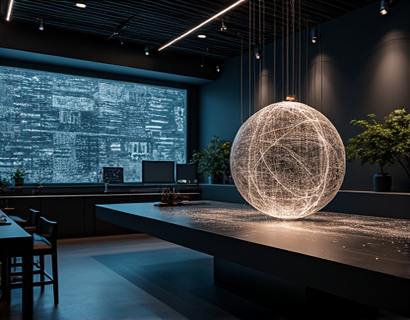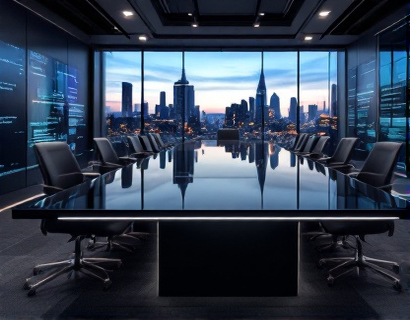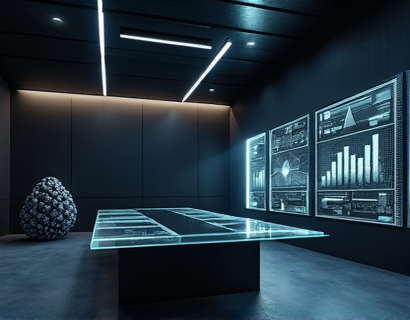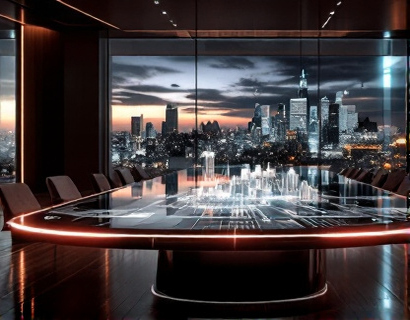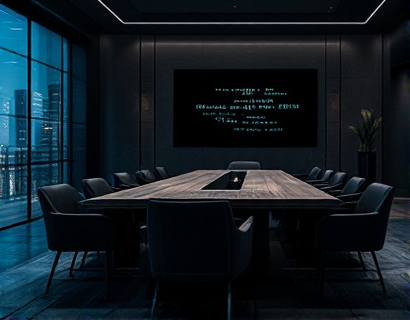Transforming Daily Life with Augmented Reality E-Commerce
In the rapidly evolving landscape of e-commerce, augmented reality (AR) has emerged as a transformative force, redefining how consumers interact with products and services. This technology, once confined to the realms of gaming and entertainment, is now being harnessed to enhance the shopping experience, offering a blend of the physical and digital worlds. For tech-savvy consumers eager to embrace the latest innovations, AR e-commerce presents a unique opportunity to elevate their lifestyle through cutting-edge products that seamlessly integrate into daily routines.
The core idea behind AR e-commerce is to provide users with an immersive and interactive shopping experience. Unlike traditional online shopping, where customers view static images or videos of products, AR allows them to visualize items in their own environment before making a purchase. This not only enhances the shopping journey but also reduces the likelihood of returns, as consumers can better assess how a product will fit into their space or complement their existing possessions.
Understanding Augmented Reality in E-Commerce
Augmented reality in e-commerce leverages the capabilities of smartphones and tablets to overlay digital information onto the real world. This is achieved through the device's camera, which captures the user's surroundings and superimposes virtual objects or information. For instance, a consumer looking to buy furniture can use an AR app to see how a sofa would look in their living room, adjusting the size, color, and position to find the perfect fit.
The technology behind AR e-commerce involves several key components. Computer vision algorithms analyze the camera feed to understand the environment, while 3D modeling and rendering techniques create realistic representations of products. Machine learning algorithms further enhance the experience by personalizing recommendations based on user interactions and preferences. This synergy of technologies ensures a smooth and engaging user experience, making AR a powerful tool for e-commerce platforms.
Benefits of AR for Consumers
For consumers, the benefits of AR e-commerce are manifold. Firstly, it provides a more accurate representation of products, reducing the uncertainty and risk associated with online shopping. This is particularly valuable for high-ticket items such as furniture, home decor, and fashion, where fit and style are crucial. By visualizing products in their own space, consumers can make more informed decisions, leading to higher satisfaction and fewer returns.
Additionally, AR enhances the shopping experience by making it more interactive and fun. Instead of scrolling through pages of images, users can engage with products in a dynamic way, rotating items, changing colors, and even seeing how different accessories complement the main product. This level of interactivity not only keeps users engaged but also fosters a deeper connection with the brand, encouraging brand loyalty and repeat purchases.
AR for Lifestyle Enhancement
The application of AR in e-commerce extends beyond mere product visualization; it offers a comprehensive solution for lifestyle enhancement. By integrating AR into various aspects of daily life, consumers can discover and adopt innovative products that make their routines more efficient, enjoyable, and personalized. For example, AR-powered beauty apps allow users to try on makeup virtually, experimenting with different looks without the need for physical samples. This not only saves time and resources but also reduces waste, aligning with the growing consumer demand for sustainable practices.
In the realm of fitness and wellness, AR can transform workouts by providing real-time feedback and guidance. AR fitness apps can overlay instructions and metrics onto the user's environment, ensuring proper form and maximizing the effectiveness of each exercise. Similarly, in home improvement, AR can guide users through complex tasks such as assembling furniture or painting walls, making these activities more accessible and less intimidating.
Enhancing Home Decor with AR
One of the most exciting applications of AR in e-commerce is in home decor. Imagine being able to see how a new rug, piece of art, or lighting fixture would look in your living room before making a purchase. AR apps can simulate these scenarios, allowing users to experiment with different styles and layouts. This not only saves time but also helps in creating a cohesive and personalized living space. For those who enjoy interior design, AR provides a powerful tool to visualize and plan their projects with precision.
Moreover, AR can assist in decluttering and organizing homes. Virtual storage solutions and organization apps use AR to show users where items can be stored, optimizing space usage and reducing clutter. This is particularly beneficial for small living spaces where every inch counts. By providing a clear visual of potential storage solutions, AR helps users make better decisions and maintain a more organized environment.
Challenges and Considerations
Despite its numerous benefits, the adoption of AR in e-commerce is not without challenges. One of the primary concerns is the technical complexity involved in developing and maintaining AR applications. Ensuring compatibility across different devices and operating systems requires significant resources and expertise. Additionally, the accuracy and performance of AR experiences can vary based on the quality of the device's camera and processing capabilities, which may affect user satisfaction.
Another consideration is user adoption. While tech-savvy consumers are more likely to embrace AR technologies, the general population may require more education and familiarity with these tools. E-commerce platforms must therefore focus on creating intuitive and user-friendly AR experiences to encourage wider adoption. Providing clear instructions, tutorials, and support can help bridge the knowledge gap and make AR more accessible to a broader audience.
Future Trends in AR E-Commerce
Looking ahead, the integration of AR in e-commerce is poised for significant growth and innovation. One emerging trend is the convergence of AR with other technologies such as artificial intelligence (AI) and the Internet of Things (IoT). AI can enhance AR experiences by offering personalized recommendations and predictive analytics, while IoT devices can enable more interactive and connected shopping environments. For instance, smart home devices can work in tandem with AR apps to create a seamless and integrated user experience.
Another exciting development is the rise of AR-powered virtual try-on experiences in fashion and beauty. As 5G networks become more widespread, the latency and bandwidth issues that currently limit AR experiences will be significantly reduced, allowing for more complex and realistic virtual try-ons. This will not only enhance the shopping experience but also drive sales by increasing consumer confidence in their purchases.
Furthermore, the integration of AR into social commerce platforms is gaining traction. Users can share their AR experiences with friends and followers, creating a social aspect to online shopping. This not only fosters community and engagement but also drives viral marketing and brand visibility. As social media continues to play a pivotal role in consumer decision-making, AR-enhanced social experiences will become increasingly important.
Conclusion
Augmented reality e-commerce represents a significant leap forward in the way we shop and interact with products. By providing immersive, interactive, and personalized experiences, AR has the potential to transform the retail landscape, offering consumers unparalleled convenience and satisfaction. For tech-savvy individuals seeking to enhance their lifestyle, AR e-commerce offers a glimpse into the future of shopping—a future where the boundaries between the physical and digital worlds blur, creating a more enriching and enjoyable experience.
























